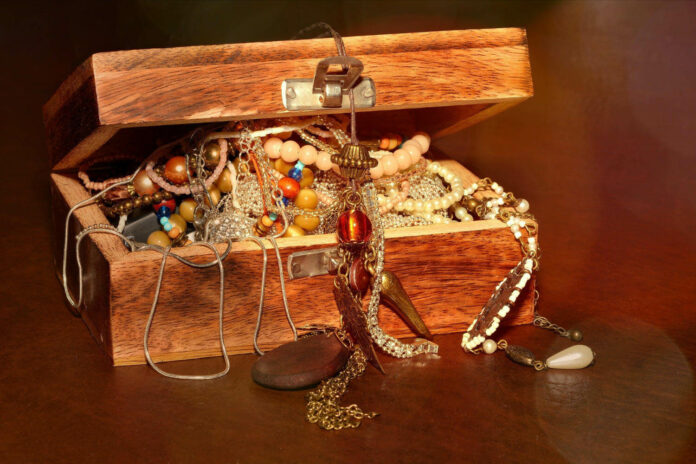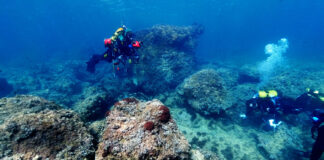
Actually, Jennie Fitzgerald (38) from Norwich just wanted to do something good and clean the beach from trash. With her husband and their two kids, they spent a weekend in their caravan in Sea Palling on the Norfolk coast. But on 20 March 2022 everything changed. After an hour of litter picking, the woman – who works in the administration of a hospital – came across an unusually shaped piece of wood. She dug down and uncovered a picture-perfect treasure chest with a rounded lid and a heavy brass padlock.
How to Break Open a Treasure Chest
At first, she thought that it might be part of a geocaching treasure-hunting game, as she later told the reporters. But then Mrs. Fitzgerald lugged the heavy find a mile and a half back to her family and shouted: “Look everyone – mum found a treasure chest!”
Everyone was beside themselves and began cleaning the sand off the chest with their toothbrushes. The massive padlock resisted all attempts to break it open. However, a lot of force was not necessary after all since the bottom started coming away due to the weight of its contents. The finder just had to help a little with a screwdriver – and the first coins fell out.
The Importance of Being “Ernest”
The letters VR and a crown were engraved on the lock, which led Mrs. Fitzgerald to believe that the find could date back to Victorian times, as she told the BBC. The contents otherwise seem to be a rather random compilation: more than 100 coins, mainly from Victorian times and by George III – provided that Mrs. Fitzgerald’s first attempts to identify the coins are correct – and reportedly some medieval or ancient issues. Moreover, the chest contained quite a few gems, a signet ring, a rusty key, a damaged pocket watch and a silver matchstick holder engraved with the name “Ernest”. But who was “Ernest”? Did he hide the chest? But when, why, where? And why did he also put a perfume bottle in the treasure chest? So many questions …
The Type of Story that Reporters Love
Given that the Eastern Daily Press speculates that this picturesque find could have been a time capsule, the property of a World War II soldier, or even the loot of a medieval (!) smuggler, it becomes clear that this treasure has stirred up not only the family of the finders but also the British media.
Mrs. Fitzgerald told the Eastern Daily Press about her initial assumptions: “Perhaps it (the chest; editor’s note) was buried up on the cliffs, maybe 80-100 years ago, by someone who maybe went off to war, and perhaps never came back. It was snug in the ground for all these years and then suddenly it has fallen out due to erosion, with the recent storms we’ve had. It doesn’t look like it has spent years in the sea.”
Is the Treasure a “Treasure”?
Jennie Fitzgerald immediately reported the find and a Finds Liaison Officer will examine it. It is hoped that this will provide some answers and perhaps lead to the find being qualified as a treasure under English law. In this case, a museum could purchase it and the sales proceeds would be divided between the happy finders and the owner of the beach. The two young children already hope to get rich. By now, the family is certainly rich in experience as to how it feels to be in the midst of a media hype.
The sensational find has been the subject of lively reports in the British press (there you can also find pictures of the finder, her treasure chest and its contents), including the Eastern Daily Press, North Norfolk News, Norfolk Live and even the BBC.
Several years ago, rangers in Costa Rica found similar treasure chests on an island that may have inspired Stevenson to write his novel Treasure Island.
By the way, a real “treasure island” that can even be visited is Visby in the Baltic Sea.
Especially in England, treasure hunting with metal detectors is a popular hobby. The successful series “Detectorists” is dedicated to the sometimes quite eccentric species of detectorists.



